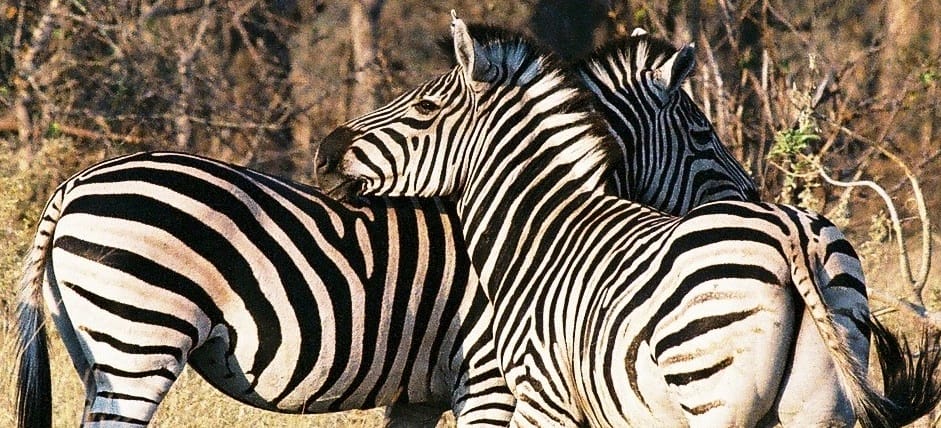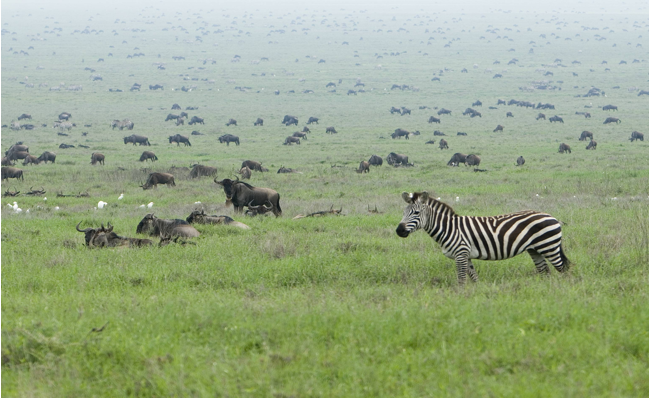Studies of Nomadic Grazers on the Serengeti

While there is a growing body of comparative research between holistic planned grazing vs. conventional grazing of domestic animals like cattle, goats and sheep, there is a relative-lack of information on how nomadic herds interact with intact wild grasslands. This is logical: almost no wild grasslands are left to study!
The article below summarizes two decades of observations by Dr. Samuel McNaughton, of the African Serengeti, which is home to three million head of over 25 species of large herbivores. The Serengeti is one of the last surviving wild grassland ecosystems.

Some of McNaughton’s findings:
- Bunched animals modify vegetation structure in a way that increases food yield for every member of the herd.
- Periodic severe grazing stimulates the health of the entire plant community.
- If plants are not periodically-grazed in a severe manner, nutrition for the individual herd members is reduced.
- To maintain high plant production, big, dense herds are needed.
- Grazing in this way increases nutrition.
- Grass density i.e. close plant spacing, is more important than grass height.
- Severe grazing yields more grazing efficiency than skim grazing.
These observations are separate from the needs of the plants, and the amount of plant recovery necessary between grazing: an intensively-studied area of planned grazing.
Other interesting observations have to do with nutrient cycling:
- Nitrogen content in soil supporting big, dense herds is double that in soils where big, dense herds are absent.
- Urination on the soil from these packed animals enriches the soil with nitrogen.
- Salt available in plants to grazing animals is higher where there are large packed herds: nature’s own salt supplement!
- In some cases it appears that these dense animal herds are responsible for maintaining productive grassland ecosystems.
- Fresh dung is generally deposited near other fresh dung which contains dung beetles rather than near older dung. McNaughton can’t say why, but it appears that animals prefer to stay near places where other animals have been, and this increases the effectiveness of mineral cycling by helping the dung beetles that do this.
- A major contributor to the health of the grasslands is the nutrient recycling of dung and urine: So, these big herds are necessary to the health of the grassland.
In summary, McNaughton finds that ecosystems in which grazers, grasses and soil life have coevolved, exist in a complex web of interrelationship. Understanding the dynamic mix of these will help land managers more effectively mimic natural processes as they manage their domestics and wild animals.
All of this is part of a growing body of evidence that points to the obvious: 20 million years of natural selection produced a system that worked quite well with no human tinkering.
The notion that humans can improve on nature is a conceit that would be laughable but for the vast damage such efforts have done!
Instead of foolishly trying to improve on nature, human tinkering should be directed towards moving systems back towards natural states, to the extent that we can understand what those were, and how to do this.
Please take a minute and read the article below.
